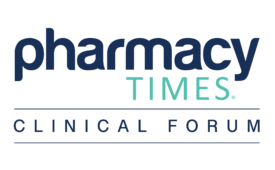
Pharmacists are instrumental in navigating the complexities of treatment eligibility, administration, and toxicity management of bispecific antibody therapy in patients with relapsed or refractory multiple myeloma (RRMM). In a Pharmacy Times Clinical Forum panel discussion held in New York, New York, and moderated by Issam Hamadeh, PharmD, BCPS, BCOP, clinical pharmacy specialist at Memorial Sloan Kettering Cancer Center in New York, pharmacists identified the unmet needs of patients with RRMM, discussed the recent trends in management of bispecific antibody therapies, and offered actionable insights for pharmacists. Through providing comprehensive staff education, establishing guidelines for treatment administration and management, and streamlining communications with community care centers, pharmacists can enhance the patient care continuum.
Over the past decade, medical research and the development of advanced therapies have significantly improved outcomes for patients, providing treatments, such as chimeric antigen receptor (CAR) T-cell therapy and bispecific antibodies, that target overexpressed proteins on the surface of malignant cells. These treatments are becoming more preferred by clinicians because they minimize damage to healthy cells, improve treatment efficacy, and reduce risk of adverse effects.
MM is characterized by different cycles of remission followed by relapse or progression, which become shorter over time. Patients who do not respond to immunomodulatory agents, proteasome inhibitors, and monoclonal antibodies are considered triple-class refractory and typically have worse prognoses. Despite the observed success of bispecifics and CAR T-cell treatments in clinical trial settings, survival rates in patients with triple-class RRMM remain poor, with a median overall survival of 11.6 months after reaching triple-class status.
Bispecific antibodies, including teclistamab (Tecvayli; Janssen Biotech, Inc) and elranatamab (Elrexfio; Pfizer Inc), target B-cell maturation antigen (BCMA), which is overexpressed in nearly all malignant cells and encourages disease progression. However, patients often face several barriers to BCMA-targeted treatments, preventing them from receiving alternative therapies after experiencing relapse or becoming refractory. With the growing availability of therapies, more data are needed to guide the optimal management of these treatments and the selection of the most effective regimens for patients. The panelists highlighted several key barriers to care for patients with RRMM, including the lack of bed space and resources in inpatient settings; the need for improved education and resources that encourage confidence in medical staff; and the challenges of transitioning patients between inpatient, outpatient, and community care centers. These factors have significant impacts on patient access to treatment and require careful planning and coordination to ensure the safety and continuity of care.
In the inpatient setting, pharmacists and care teams often lack the space for administering BCMA-targeted therapies, limiting the ability to provide initial step-up dosing and close monitoring to patients with RRMM. Competing demands for limited resources must also be balanced with the needs of other patient populations receiving CAR T-cell therapy or autologous stem cell transplantation, which require dedicated inpatient resources. Additionally, the shortage of available beds for administering initial doses in treatment disrupts the transition to outpatient care for ongoing BCMA-targeted therapy.
“Every week, we would have a meeting and it was like musical chairs trying to select which patient would be next on the list,” said Lowena Tam, PharmD, BCPS, clinical pharmacy specialist at North Shore University Hospital in Manhasset, New York.
Care continuity is key for optimizing the treatment outcomes of patients receiving care in inpatient, outpatient, and community care center settings. Staff expertise and comfort levels when managing novel therapies can vary across institutions, largely impacted by disparities in access to education and training resources. Clinical trials are typically done in larger academic centers, where staff are more familiar with treatment management for novel therapies, which may create a disconnect when these treatments are rolled out in community care centers, where clinicians may lack direct experience with specific therapies. This can lead to challenges in effectively implementing treatments, highlighting the need for comprehensive education to bridge the gap between controlled trial environments and applications in clinical practice.
“We have all these different targets now, but I don’t think anyone knows what order to use them [in], and we don’t know [whether] what we’re doing is best for patients. Now, there are all these trials with BiTEs [bispecific T-cell engagers] trying to move them up in therapy,” stated David Sabatino, PharmD, BCOP, clinical pharmacy manager at NewYork-Presbyterian Hospital and Columbia University Irving Medical Center in New York. “We’re just now adding them in combination. And now it’s going to be a [mishmash] of data that’s going to get thrown at us.”
Furthermore, another significant factor underlying the gap in treatment education is the lack of guidance from pharmaceutical companies in the real-world rollout of BCMA-targeted therapies for RRMM. The speakers discussed a need for more support when rolling out novel treatments, most agreeing that the package inserts for these agents do not provide sufficient guidance for treatment administration and toxicity management. This creates challenges for providers tasked with developing appropriate protocols and training staff. Michelle Pasciolla, PharmD, BCOP, a clinical pharmacy manager at NewYork-Presbyterian Hospital, noticed higher rates of cytokine release syndrome and neurotoxicity in her patients than expected compared with the trial results and found there was little access to support or resources from the pharmaceutical companies that rolled out the treatments.
“That’s where I wish the composite drug companies really worked a little bit more to prepare for the real-world rollout where these patients are going to be of higher acuity, higher disease burden, [with] more toxicity,” said Pasciolla. “I think now we have so much more experience under our belt, and it’s obviously been so much smoother with BiTEs across the board, but it was a learning experience—a very, very steep [one]. I just don’t think we expected it.”
Despite the lack of proper educational guidance, the speakers effectively bridged the gap between clinical trial research and real-world applications of BCMA-targeted therapies by leveraging their expertise and overcoming these barriers through collaboration and innovative problem-solving. Multiple speakers agreed that administering bispecifics, namely teclistamab, prior to CAR T-cell therapy in earlier lines of treatment typically allowed for patients to have a better tolerance and fitness for BCMA-targeted therapies, often giving them easier and quicker access to treatment. Further, use of bispecifics early in treatment can help bridge patients to CAR T-cell or other later-line therapies.
However, bispecific therapy is not a one-time treatment and requires an ongoing high level of support, making seamless transition of patients among inpatient, outpatient, and community care centers crucial for continuity of care.
“With bispecifics, because it’s not a one-and-done therapy, it requires a high level of commitment and support,” said Hamadeh. “That’s why you need to make sure there are care providers available for these patients, especially if they encounter any toxicity.”
Several methods can be employed to help overcome the challenges of transitioning patients between care centers, and pharmacists play a crucial role in the implementation of shared technology, standardized treatment protocols, improved communication and coordination among care centers, and comprehensive staff education and training. Multiple speakers discussed the use of software to share electronic health records between care providers, including specific patient information and standardized protocols for treatment management and monitoring.
“We are working on the comfort levels of the nursing staff and the health care team,” said Pragna Patel, PharmD, BCOP, pharmacy manager at Montefiore Medical Center in New York. She described the need for training and supporting staff through education and providing comprehensive treatment information, as well as standard operating procedures or flowcharts to help them effectively and confidently administer treatments to patients.
Pharmacists are equipped with the expertise essential for developing and delivering training programs for medical staff, especially in an outpatient setting, that effectively calibrate care across providers and ensure appropriate administration and monitoring of treatment in patients with RRMM.
“When we rolled this out, we had a lot of education for outpatient clinic staff to be able to know how to monitor these patients and how to assess them for symptoms when they are outpatient [vs] when they’re at home and they have these fevers,” said Rachel Abramova, PharmD, BCOP, clinical pharmacy manager at the NewYork-Presbyterian Hospital. “Also, educating our urgent care or emergency department that when these patients come in, they have already received outpatient [care].”
Additionally, pharmacists play a key role in implementing strategies that not only effectively guide medical staff through treatment protocols but also comply with the Risk Evaluation and Mitigation Strategies (REMS) program guidelines for these therapies, such as maintaining standardized documentation and staff education.
Alyssa Mae De Castro, PharmD, BCOP, clinical pharmacy manager, oncology at Montefiore Medical Center, added that pharmacists are well equipped to implement procedures that follow REMS requirements. “If they need tocilizumab [Actemra; Genentech] in the middle of the night, being able to understand the REMS specific guideline [is important],” De Castro said. “It’s another step of education.”
As the landscape of MM treatment evolves with the introduction of advanced therapies, the educational and organizational role of pharmacists becomes increasingly vital. By providing targeted education to health care teams, developing standardized protocols, and coordinating care transitions, pharmacists help bridge gaps in patient care. Their expertise in managing these therapies helps mitigate challenges and ensures that patients with RRMM receive optimal, personalized care. Through their efforts, pharmacists can significantly enhance treatment outcomes and contribute to a higher quality of life for patients navigating these advanced therapeutic options.
“Transitions of care for all of these [bispecific therapies are] important considerations that we need to take into account, especially when we think about how long patients are going to be on these therapies,” Hamadeh said. “Because treatment with bispecifics is not a clear-cut process…it’s always a good thing to have a multidisciplinary approach, especially for patients who are going to be on these [therapies long term].”





